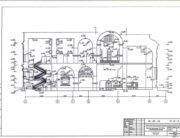The issue of restoration and the protection of the historical and cultural heritage has long reverted to the level of a complex philosophical, social and moral-ethical problem. Obviously, the fact that considering the restoration only from a scientific and technical point of view and limiting only the development of concrete methods of restoration and conservation works would underscore the extremely important and responsible role played by the restoration at the present stage of the development of society. Without realizing the philosophical context behind the reproduction of outstanding monuments, the very need for restoration becomes an indicator of the level of civilization of society and humanity as a whole.
The prosperity of the country depends not only on the economic factors and the degree of state democracy, but also on the level of consciousness of the people, the cultural level of the nation and the attitude towards the cultural and artistic heritage of the past generations. As the history teaches the truth, there can be no prosperous, highly developed state with a high economic standard of living in a country where there is no deep awareness of the role of spiritual and cultural-ideological factors in the process of formation and development of society.
To date, a number of international legal instruments have been adopted in the field of protection and restoration of cultural and artistic heritage, which are the basis and basis for conservation and restoration works on architectural monuments: the 1964 Venetian Charter, the Code of the International Council for Monuments and places of interest, the Paris Convention for the Protection of the World and Natural Heritage of 1972, the Granada Convention on the Protection of the Architectural Heritage of Europe in 1985, the Moscow Architectural Heritage of 1996, and a number of other documents .
Today, Kiev has been more than one and a half thousand years since its foundation. Historical and cultural heritage of the capital is our glory, our pride, our spiritual and state roots. This heritage today is a cultural heritage not only of Ukraine, but also of Europe and the world. In Ukraine, about 145 thousand historical and cultural monuments are registered and protected by the state, including 15 thousand are architectural monuments and urban planning. Only in Kiev, the historical building is more than 32 thousand buildings, 4000 of which are historical and cultural monuments, and 42 objects are included in the list of world heritage. Restoration and protection of monuments of Kiev – an ancient political, administrative and spiritual center of the Eastern Slavs, and now – the capital of the European state, is one of the most important functions of the city, emphasized in Article 5 of the Law of Ukraine “On the Capital of Ukraine – Hero City Kyiv. ”
The state itself is responsible to future generations for the preservation and transfer of monuments to the future in all their primitive beauty, and this position of the modern concept of protection and restoration is embodied in international legal documents in the field of protection and restoration of cultural and artistic heritage.
The restoration techniques that are used today in the architectural monuments of Ukraine correspond to all international “memorial protection and restoration documents“, and the same can be said about the techniques used to reproduce outstanding monuments such as, for example, Mikhailovsky Zolotoverhii Cathedral and Assumption Cathedral of the Kiev-Pechersk Lavra. Confirmation of the high level of restorative methods of reproduction of monuments in Ukraine was also the awarding of the State Architectural and Historical Preserve “Sofiyskiy Museum” in 1987 by the European Golden Medal of Alberta for the restoration and preservation of historical monuments. The high level of the “Ukrainian school of restoration” is confirmed by international experts in the field of restoration and protection of cultural and artistic heritage: for example, US expert Stephen J. Kelly has testified at one of the last international conferences that some types of restoration works (in particular, performance according to analogues and archaic sources of mosaics and frescoes in interiors of reproduced monuments and the restoration of existing mosaics and frescoes) performed by Ukrainian restorers are unique. The same Stephen J. Kelly, as an expert of ICOMOS, noted the level of professional restorers during the acquaintance with the course of work at the Assumption Cathedral of the Kyiv-Pechersk Lavra in May 1999.
Summarizing the conclusions expressed by many international experts in getting acquainted with the level of the Ukrainian school of restoration and the restoration technologies that are used here, one can emphasize the following. Highly appreciating the level of the Ukrainian school of restoration, all experts emphasized the commonality of the problems faced by specialists around the world today, the community of developed restoration techniques and the need for close cooperation in order to improve technological processes.



















